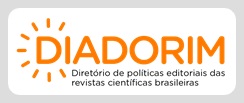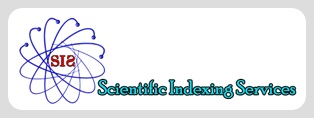Guidelines
Publication Rules for author(s):
We accept texts in English, Portuguese, or Spanish. We receive a continuous flow of manuscripts. This is a semestral Journal with publications in April and October of each year. The manuscript must not have been published in another journal.
Publication Fees: The journal does not charge any publication fees.
NOTE: All articles are published open access. Everyone can read and download them.
Please read the publication rules:
- Text/format: The article must comply with A4 format, as specified in our template. The manuscript will be written in Times New Roman Font. Download the template;
- Number of pages: 5 minimum and 30 maximum;
- Title: Write the words in times new roman 14 bold. All words in English. It will be as enlightening and concise as possible;
- Abstract: Shall provide an abstract in English (mínimum 120 Words and no more than 250 words and Times New Roman 10 font). The abstract should be structured in accordance with the template format;
- Introduction: Will include the purpose or objective of the research in time new roman 12 font;
- Methodology / Data collection: Write in Times New Roman 12 font and will include basic procedures (sample selection or cases, methods and techniques of experimentation, design, observations, and analysis);
- Figures and Tables: Write in Times New Roman 10 font;
- Results: Give main findings (specific dates and their statistical results significance and more important main findings. Write in Times New Roman 12 font;
- Conclusions: The more important conclusions. Write in Times New Roman 12 font;
- References: Write in Times New Roman 12 font;
- The Template: This is ready. It is mandatory to use our template. Download the template.
NOTE: The title and abstract are very important since the full paper reading of your article by potential readers will depend on them (especially in electronic searches).
- Keywords. After the abstract, it shall include 3 to 5 keywords expressed in English. Could use keywords and terms internationally accepted in the field of education to express concepts and content.
- Structure of the article. It is recommended that the article cover at least the following aspects: defining the problem or topic being studied, theoretical background, design and methodology, results, discussion of results, conclusions, limitations of the study and when appropriate, prospective.
- Sketches, drawings, graphs, tables, equations, etc. Shall be numbered consecutively according to the type. Note: graphs must be called figures in the captions.
- References (bibliographic and webgraphic). References (bibliographic and webgraphic). All references are included at the end of the article, and the veracity of these quotes is the responsibility of the author(s). Shall be presented in alphabetical order and shall conform to the Name-Date model used in our template. References with DOIs should be prioritized.
Citations in the text:
All citations in the manuscript must use the Harvard Style Referencing. See the full guide of Harvard-Aru: https://london.aru.ac.uk/_uploads/guides/Harvard_referencing_201920-ugqim.pdf
Our template is using this style, for example:
- Sartori (2006) or (Sartori, 2006).
- Blackwell and Spafford (1987) or (Blackwell and Spafford, 1987).
- Gomes, Vieira and Hamza (2018) or (Gomes, Vieira and Hamza, 2018).
- Vandecar et al. (1997) or (Vandecar et al., 1997).
Equations:
Shall be numbered consecutively. See Template.
Reference list:
See the full guide of Harvard-Aru: https://london.aru.ac.uk/_uploads/guides/Harvard_referencing_201920-ugqim.pdf
Examples:
ASTM – American Society for Testing and Materials, 2011. D6432-11: Standard Guide for Using the Surface Ground Penetrating Radar Method for Subsurface Investigation. ASTM International, West Conshohocken, PA.
Gomes, A.J.L. and Hamza, V.M., 2005. Geothermal gradient and heat flow in the state of Rio de Janeiro. Revista Brasileira de Geofísica. Rio de Janeiro, 23(4), pp.325-347. https://doi.org/10.1590/S0102-261X2005000400001
Sartori, E., 2006. Convection coefficient equation for forced air flow over flat surfaces. Solar Energy, 80(9), pp.1063-1071. https://doi.org/10.1016/j.solener.2005.11.001
Smith, J., 1975. A source of information. In: W. Jones, ed. 2000. One hundred and one ways to find information about health. Oxford: Oxford University Press. Ch.2.
Vandecar, J.C., Russo, R.M., James, D.E., Ambeh, W.B. and Franke, M., 2003. Aseismic continuation of the Lesser Antilles slab beneath continental South America. Journal of Geophysical Research: Solid Earth, 108(B1). https://doi.org/10.1029/2001JB000884
Yasuda, N., Takagi, S.I. and Toriumi, A., 1997. Spectral shape analysis of infrared absorption of thermally grown silicon dioxide films. Applied Surface Science, 117-118, pp.216–220. https://doi.org/10.1016/S0169-4332(97)80082-7
******************************
Register:
Authors need to register with the journal prior to submitting or, if already registered, can simply login and begin the five-step process.
Interested in submitting to this journal? We recommend that you review the About the Journal page for the journal's section policies, as well as the author guidelines.
Use our template in preparing the manuscript. Other models will not be accepted.
Download the template by clicking beside. The template can be obtained here.
Attention: Accepting articles. We receive a continuous flow. The deadline is March 31 for the April edition and September 30 for the October edition of each year.
******************************
License
Copyright (c): International Journal of Geoscience, Engineering and Technology

This work is licensed under a Creative Commons Attribution-NonCommercial-ShareAlike 4.0 International License.
All articles published in this journal are licensed under a Creative Commons Attribution-NonCommercial-ShareAlike 4.0 International.
******************************
Code of ethics, plagiarism detection, and review:
- Code of ethics: Committee on Publication Ethics (COPE).
- Plagiarism detection: Plagiarism in scientific journals is a serious ethical offense that can damage the reputation of the authors, the journal, and the scientific community as a whole, even if unintentionally. During the review process, the editor may use: CopySpider and/or similar.
- Peer review modality: Double-blind review.











